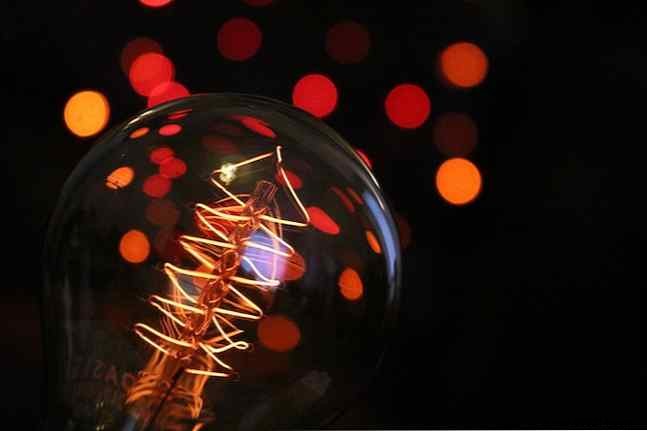There probably wouldn't be a smart home industry if it weren't for smart light bulbs. But have you ever stopped to wonder what makes a light bulb smart?
In this article, you will learn all the little details about smart lighting products. Consider it your guide to all the things you wanted to know but were too afraid to ask. With this knowledge in your pocket, you'll be able to make the right decisions about smart lighting products for your home and budget.
By definition, smart lighting is a technology designed for energy efficiency. Unlike traditional LED bulbs, is it worth buying LED bulbs for your home? Is it worth buying LED bulbs for your home? The light emitting diode (LED) bulb has only just started to become popular in the last decade. Here's what you need to know before you decide if LED bulbs are right for you. Read More
To determine if a lighting product is smart, consider two simple gifts. First, the product will have "Smart" somewhere in its title. Second, look in the product description for the language that says it can be controlled with an app How to turn lights on or off with your phone on the cheap How to turn lights on or off with your phone on the cheap In this article, you ' You will learn about the many ways to control the lights in your home with your phone. You'll also see how each solution compares in terms of pricing. Read more.

The biggest names in smart lighting include Philips Hue, LIFX, TP-Link, GE, Lucero, Sylvania, Cree, Stack, Ilumi and more.
Smart home products, not just smart lighting, need to connect somehow. The four major smart home automation standards are Wi-Fi, Bluetooth, ZigBee, and Z-Wave.
We've all heard of Wi-Fi. It's what we use to connect our laptops, cell phones, and tablets to the rest of the world. Wi-Fi requires a lot of processing power, which isn't a problem for devices you can recharge overnight. However, it is not the ideal solution for smart home products. Future smart home trends and the products you will use. Future trends for the smart home and the products it will use. It's time to jump into your time machine. You are about to find out what could be the biggest trends in the smart home industry in 2021 and the products you could be using. Read More
Bluetooth is another standard connection that is also imperfect. Although Bluetooth requires less power than Wi-Fi, it has a very limited range. Also, there are limitations on the number of devices you can connect using Bluetooth.

This brings us to ZigBee and Z-Wave, which have become the two most common smart home wireless standards. Like Bluetooth, these standards require very low power consumption. Better yet, its ranges are much greater than Wi-Fi because they work over what's known as a mesh network.
Unlike Wi-Fi, which requires a router as a central connection point, mesh networks allow each device to have a wireless signal. By doing so, the devices can communicate with each other in a more direct way. When a device goes offline, alternate paths remain that allow the entire system to remain online.
Another benefit to both ZigBee and Z-Wave? You can use them to connect hundreds of smart home devices at the same time.
For the non-tech savvy, the differences between ZigBee and Z-Wave are so minimal that you probably won't notice it. If you're the kind of person who likes to get into the digital weeds, I point you to this quote from Securifi:
Now that you know how smart lighting products are connected, it's time to look at some of the terms you may encounter when shopping for a product. Knowing what these terms mean will help you make a more informed decision.
By definition, you determine the size of a light bulb by measuring its diameter. Each size is expressed in 1/8-inch or one-millimeter increments, depending on where you live. For example, an A-19 light bulb is 19-eighths of an inch or 2-3/8 inches in diameter. In metric, this is the E26 bulb because it has a diameter of 26mm.
If these measurements confuse you a bit, don't do it. When it comes to smart home lighting products, the options are still somewhat limited 22 ways to light up your life with RGB LED strips 22 ways to light up your life with RGB LED strips You can buy five meters of LED strip lights RGB for under $10, so here are some great project ideas to use in your home. Read more.
In the United States, A-19 or E26 is the size of most light bulbs. This light features a "medium" or "standard" base. You'll also see E26 bulbs in a BR30 form factor. These are often described as flood or downlights and are perfect for recessed can fixtures.
You're also likely to come across E-14 "chandelier" smart lights very soon now that Philips Hue has announced two new products based on this standard.
Beyond this, you will also see special smart lighting products on the market. These include LED strips, all-in-one lamps, and more.
If you're new to smart lighting, chances are you've experienced some price shock. Smart lighting solutions are not cheap. Philips Hue smart bulb options to save money. Philips Hue smart bulb alternatives to save money. In this article, you'll learn about some of the cheaper Philips Hue alternatives and see how they compare. Read More However, these prices don't sound too bad when you consider how long they have to last.
Before smart lighting, the light bulb industry used something called Average Rated Life (ARL) to determine how long a light bulb would last before it burned out. This rating took into account the time it took for half of the bulbs in a test batch to fail. For example, an ARL of 1,000 meant that it took 1,000 hours for 50 percent of the bulbs to stop working.

For smart lighting products, things are not always so clear cut. Instead of seeing an ARL rating, you're likely to see a number next to a term like "life hours," "life," and "long life."
When expressed in hours, this number is straightforward, like a light bulb that promises 25,000 hours of use. When a light bulb promises to last a certain number of years, things are not so transparent and vary depending on the supplier. The reason for this confusion is that you don't necessarily know how many hours the bulb is on each day.
The bottom line: Smart light bulbs usually last a long time. In fact, in most cases, they will last for decades. You may have to look at the fine print, though, for a more detailed number.
You'll hear a lot about lumens when you discuss smart lighting. In its most basic form, lumens is the brightness of a light bulb. The higher the number of lumens, the brighter your light bulb will be on the highest setting.
As the US Office of Energy Efficiency and Renewable Energy explains:“Lumens allow you to buy the amount of light you want. So when you buy your new bulbs, think in lumens, not watts.”
In addition to lumens, you're also likely to come across the term "color temperature." The three types of color temperature for light bulbs include Soft White (2700-3000K), Bright White/Cool White (3500-4100K), and Daylight (5000-6500K).
In other words, the higher the Kelvin, the whiter the color temperature.
One of the most popular smart light features is its ability to change colors. Most of the ones available in the market promise more than 16 million color options. This number comes from the RGB (red, green, blue) system that is often used to represent the colors available on a computer screen.
As WhatIs.com explains:
In recent years, manufacturers have finally realized that not every or every situation How to Set Smart Lights So They Don't Bother Everyone How to Set Smart Lights So They Don't Bother Everyone Sometimes all you want is a smart bulb that does what it should. it's supposed to do - turn on or turn off. Sometimes it can be very difficult to get your smart light to work properly! Read More Because of this, you are now seeing smart bulbs listed as "white" or "ambient white."
With white bulbs, you cannot change the color or temperature of white. However, you can dim it like other smart bulbs. White bulbs don't allow you to change the color, but you can change their temperature, usually between a soft warm white and bright daylight.
From a price point of view, colored bulbs are the most expensive, while white bulbs are the cheapest. The ambient white lights fall somewhere in between.
It's important to know what to look for when shopping for smart lighting products. Important factors include bulb base size, color options, how they connect, and more.
Hopefully this article addressed those issues to make you a more informed shopper. Now you can shop with confidence when looking for the best ways to set up your home lighting.
What kind of smart light bulbs do you buy and why? Let us, and other readers, know by commenting below.